| РУССКИЙ |
 |
Automatic Segmentation
MSU Graphics & Media Lab (Video Group)
Algorithm, ideas: Dr. Dmitriy Vatolin
Algorithm, implementation: Sergey Grishin,
Kostya Strelnikov, Maxim Makhinya, Sergey Putilin
Interest in advanced interactivity with multimedia data significantly increased last years. This cause an advent of new standards proposing the functionality for manipulation with multimedia data (an example of such a standard is MPEG4). That is why segmentation algorithms find its application in wide range of areas including content-based representation of multimedia data, improvement of coding efficiency in video compression standards, sophisticated query and retrieval of video and other content-based functionalities for multimedia applications.
Our developed algorithm performs detection and tracking of foreground
(FG) objects in video. This is done by calculation of global motion
with further estimation of local motion. Detection of a FG object
position is then performed based on the information about global and
local motion. The principal advantage of the method is its ability to
detect a FG object even in case of ultra slow motion which is not common
for algorithms of this type. Another important advantages include:
Examples
This section contains segmentation results of developed algorithm and its comparison with algorithm developed at University of Florida.
The first example (pic. 1, 2) demonstrates result obtained using 'dancer' test video sequence:

Pic.1 Original frame
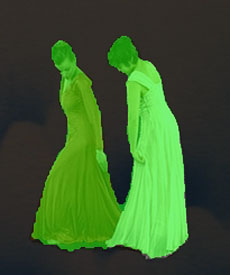
Pic.2 Segmentation result
The second example (pic. 3, 4) shows result obtained using 'table tennis' test video sequence:

Pic.3 Original frame
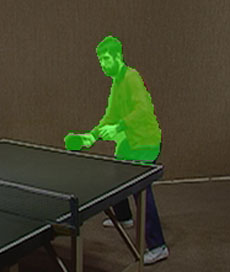
Pic.4 Segmentation result
The next example (pic. 5, 6) shows segmentation result of 'bus' test video sequence:

Pic.5 Original frame
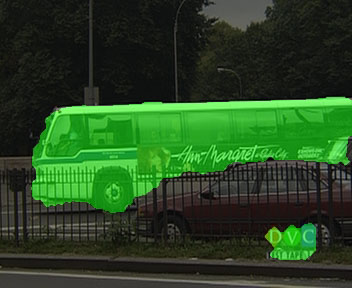
Pic.6 Segmentation result
Quality comparison of the developed method and algorithm of University
of Florida is shown on the pictures below. This example shows results
for test video sequence 'mother & daughter'. This sequence has two
obstacles for successful segmentation. The first one is the proximity
of colors belonging to different objects. And the second one (obstacle
for foreground-background classification) is very slow motion of FG
objects. Method of University of Florida produces segments consisting
of parts actually belonging to several objects: the blue segment has
parts in the area of woman's silhouette, blue segment points are
presented around woman's head. However this comparison is not fully
correct because algorithms perform segmentation of different types.
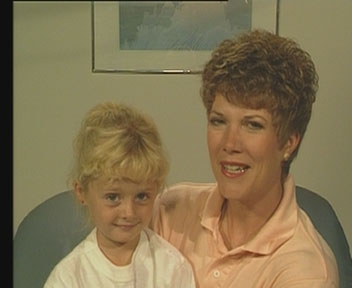
Pic.7 Original frame
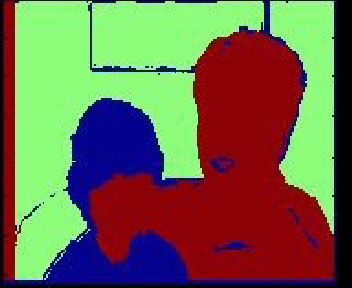
Pic.8 University of Florida result
(different segments are marked by different colors)
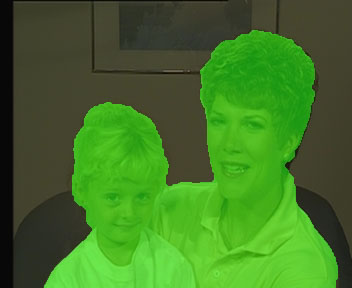
Pic.9 Proposed method result
Download
For commercial license of this filter please contact us via

|
Other resources
Video resources:
Server size: 8069 files, 1215Mb (Server statistics)
Project updated by
Server Team and
MSU Video Group
Project sponsored by YUVsoft Corp.
Project supported by MSU Graphics & Media Lab